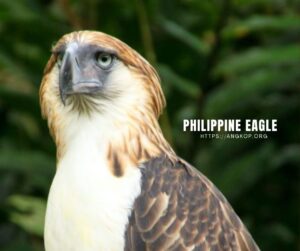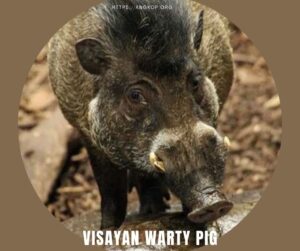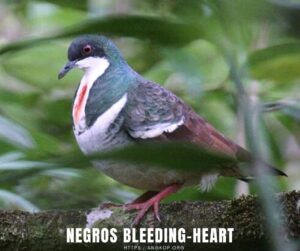Endangered Species in the Philippines
So many animals in the Philippines have been listed as endangered species. These animals are threatened by so many factors both natural and man-made and their populations keep on declining.
Also known as the monkey-eating eagle or great Philippine eagle, is a critically endangered species of the eagle of the family Accipitridae which is endemic to forests in the Philippines.
The Philippine eagle is considered the largest of the extant eagles in the world in terms of length and wing surface. There are only a few of these eagles left in the world. For the past 56 years, their global population has been steadily falling. Various laws have been created to protect the Philippine eagle, but they have been poorly enforced, resulting in the eagle’s continuous decline.
 Tamaraw
Tamaraw
The tamaraw, sometimes known as the dwarf forest buffalo, is an animal found only in the Philippines, specifically on the island of Mindoro.
The tamaraws were also victims of illegal hunting and the animal flesh trade among Mindoro residents.
5,000 hectares of Mount Iglit-Baco, in Mindoro, were turned into a National Park to provide a safe haven for tamaraws in order to encourage their conservation and protection. These unique beasts are free to roam and procreate in their native habitat. After successful conservation efforts, there are around 480 tamaraws in the wild today.

Philippine Crocodile
The Philippine crocodile is a critically endangered species (IUCN 2000) and considered to be the most threatened crocodile species in the world. This endemic freshwater crocodile, once thought to be extinct in Luzon, was recently rediscovered in the Northern Sierra Madre, Northeast Luzon.
The Philippine crocodile’s greatest threat is the enormous clearance of rainforests that serve as the crocodile’s natural home. The woodlands are being cleared to make way for farming.
The ministry says the Philippine crocodile and the saltwater crocodile are “critically endangered” mainly due to loss of habitat as a result of human population growth and expansion.
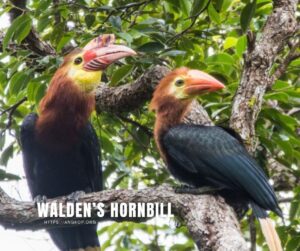
Walden’s Hornbill
Walden’s Hornbill is native to the Philippine islands of Panay and Negros; there are also small flocks in Zamboanga del Norte, Mindanao. Excessive hunting and illegal logging have resulted in the extinction of this species in the Negros and Guimaras provinces. As a result, it has been added to the IUCN list of critically endangered species.
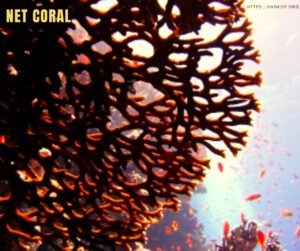 Net Coral
Net Coral
Alveopora excelsa populations are in decline. Due to this population trend, it has been included in the IUCN red list as an endangered species.
The current aquarium trade has made this specific type of coral a target, with its appearance making it an attractive addition to an aquarium. Other than extraction and use in aquariums, net corals are also susceptible to coral bleaching. Studies show that Alveopora excelsa have a high response to the bleaching phenomenon, making them a likely species to face immediate extinction.
Visayan Warty Pig
Visayan Warty Pig (Sus cebifrons) listed by IUCN as a critically endangered species in the Philippines. The pig, which was once common throughout the central Philippines, is now only found on two islands: Panay and Negros. Although it has not been proved, there may still be a small herd on Masbate island.
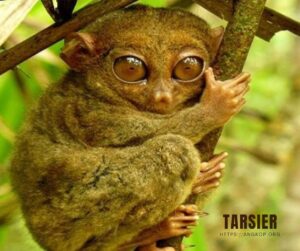 Tarsier
Tarsier
These primates are found on the islands of Samar, Leyte, Bohol, and Mindanao, as well as a handful of smaller islands like Dinagat and Basilan.
Tarsiers are a tourism mascot in Bohol, but there is little regulation surrounding this practice. Many tarsiers are exhibited in deplorable conditions at roadside attractions. Given the difficulty of keeping tarsiers alive in captivity, mortality is high among these creatures – when they die, replacements are seized from the wild. Deforestation and increased typhoons due to climate change also pose a threat to wild tarsiers.
Philippine Forest Turtle
The Palawan Forest Turtle (Critically Endangered), rediscovered in 2004, is among the 25 most endangered turtle species in the world. An enigmatic freshwater species endemic to the island of Palawan in the Philippines, this turtle was subject to more misconceptions than almost any other turtle
Negros Bleeding-Heart
The Mindoro bleeding-heart (Gallicolumba platenae) population is endangered. It is listed as the Near Threatened status under the IUCN red list. Humans are the major reason for their extinction. Hunting of this dove is done for meat, trade, or marble extraction in the island area by the locals.

You may also visit – https://www.facebook.com/angkopparasahayop

